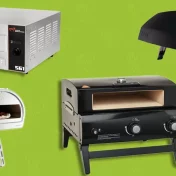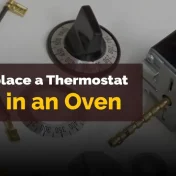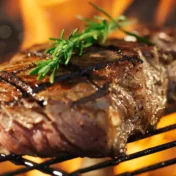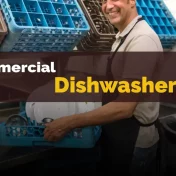Pizza, cherished by millions globally, has been a staple in culinary delights for centuries. But what truly elevates a slice of pizza from good to great?
The oven it’s cooked in! For restaurateurs and pizzeria managers, investing in a high-quality commercial pizza oven can be the game-changer.
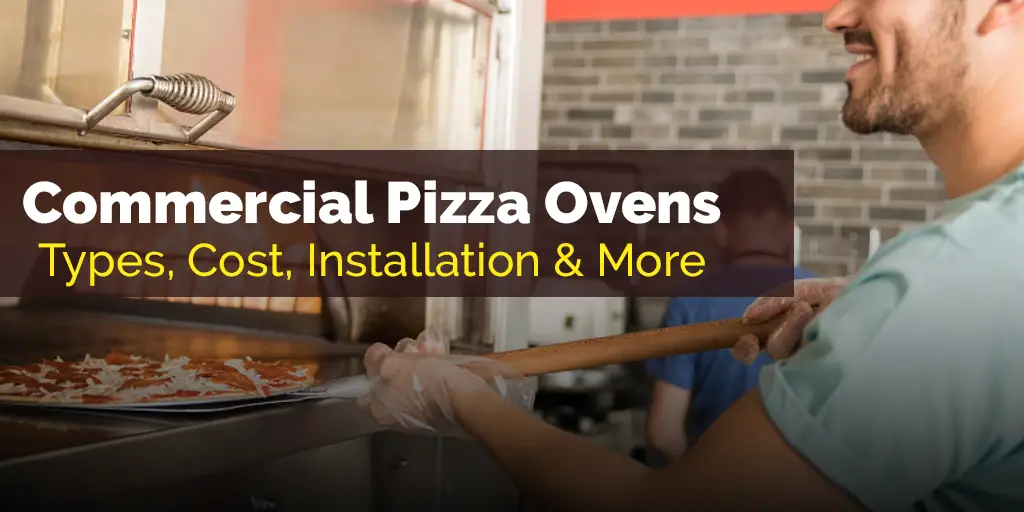
Crafted for heavy-duty use, these ovens are tailored to meet the demands of bustling kitchens, ensuring each pizza slice is baked to perfection. But with myriad options flooding the market, how does one make an informed choice?
This guide aims to unravel the mystique surrounding commercial pizza ovens, steering you towards a decision that aligns with your business’s needs.
Key Components of an Effective Pizza Oven
A top-notch pizza oven isn’t just about heat. It encompasses a combination of several features, each playing a pivotal role in ensuring the pizza’s taste and texture are just right.
Let’s delve into these crucial components:
Temperature Control
Achieving the right temperature is paramount. An oven that can swiftly reach and maintain a steady temperature guarantees consistent results. Look for ovens that offer adjustable thermostats or digital temperature controls for precision.
Heat Distribution
Uneven heat can be a pizza’s worst enemy. Efficient heat distribution ensures every part of the pizza cooks uniformly. Ovens with advanced convection systems or superior insulation are a great choice.
Material of Construction
The oven’s material significantly impacts the cooking process. For instance, stone surfaces are revered for their ability to absorb moisture, ensuring a crisp crust.
Size & Capacity
Depending on the volume of orders, the oven’s size and capacity can be pivotal. Consider how many pizzas you intend to bake simultaneously and ensure the oven can accommodate that.
Ease of Use
In a fast-paced environment, user-friendly controls can make all the difference. Whether it’s setting the temperature or adjusting the timer, quick and intuitive controls are a boon.
Durability
Commercial kitchens are tough environments. Investing in a durable oven made of quality materials ensures it stands the test of time, providing value for money.
Energy Efficiency
With rising energy costs, an energy-efficient oven can lead to considerable savings in the long run. Plus, it’s an eco-friendly choice!
Did You Know? A pizza cooked in an oven with consistent heat distribution can retain its nutritional value better as it cooks evenly and swiftly, locking in the nutrients.
Exploring the Types of Commercial Pizza Ovens

Choosing the right oven can sometimes be overwhelming given the sheer number of options available. Let’s simplify this by understanding the various types and their unique features:
Brick Pizza Oven
Highlight: Traditional Charm with Modern Efficiency
A brick pizza oven, often synonymous with traditional Italian pizzerias, uses wood as fuel. The bricks absorb and radiate heat, giving pizzas a distinct smoky flavor and crisp crust.
Pros:
- Authentic flavor and texture
- Versatile for various dishes beyond pizza
- Aesthetic appeal, enhancing the restaurant’s ambiance
Cons:
- Takes longer to heat up
- Requires manual temperature regulation
- Larger footprint, occupies more space
Convection Pizza Oven
Highlight: Compact Powerhouse
Driven by electric or gas power, convection ovens circulate hot air around the pizza, ensuring quick and even cooking.
Pros:
- Faster cooking times
- Compact design suitable for smaller spaces
- Economical price point
Cons:
- Might not achieve the authentic pizza flavor
- Limited capacity; typically cooks fewer pizzas simultaneously
Conveyor Pizza Oven
Highlight: The Speed Demon
Favored by fast-food chains, these ovens use a conveyor belt to move pizzas through a heated chamber, delivering consistency and speed.
Pros:
- Consistent results
- High-volume cooking
- Minimal supervision required
Cons:
- Bulkier design
- Less control over individual pizza cooking
Deck Pizza Oven
Highlight: Versatility Meets Capacity
Resembling a traditional oven, deck ovens have stone or ceramic platforms to bake pizzas directly on the surface.
Pros:
- Consistent heat distribution
- Multiple decks allow varied temperature settings
- Perfect for medium-sized operations
Cons:
- Takes some time to heat up
- Requires more space than convection ovens
Countertop Commercial Pizza Oven
Highlight: Perfect for Limited Spaces
Ideal for food trucks, concession stands, or small eateries, these ovens are compact yet powerful.
Pros:
- Space-saving design
- Portable and versatile
- Quicker heat-up times
Cons:
- Limited capacity
- Might lack advanced features
Expert Insight: “Your oven choice reflects your brand. While traditional ovens like brick ovens attract those seeking authenticity, conveyor ovens are a hit with businesses prioritizing speed and volume.” – ChefAntonio Mancini, Renowned Pizzaiolo
Factors to Consider When Buying a Commercial Pizza Oven

Every business has unique needs, and these should be at the forefront of your decision-making process. Here are the critical factors to consider when investing in a commercial pizza oven:
1. Capacity & Size
How many pizzas do you need to make during peak hours? Understanding this will help you choose an oven that can handle the demand.
Tip: Measure the space where the oven will be installed. Always account for extra space for ventilation, especially for larger ovens.
2. Budget Constraints
There’s an oven for every budget. While it’s tempting to opt for the most advanced model, always evaluate if you’re getting the best value for your investment.
Fact: On average, commercial pizza ovens range from $1,000 to $30,000, depending on type and features.
3. Fuel Type
Different ovens use different fuel types: wood, gas, electric, or even coal. Your choice should align with your desired pizza flavor, operational costs, and any local regulations.
Average Monthly Operational Costs by Fuel Type
| Fuel Type | Average Cost (per month) |
|---|---|
| Wood | $500 – $700 |
| Gas | $300 – $500 |
| Electric | $200 – $400 |
| Coal | $600 – $800 |
4. Temperature Range
Different pizzas require different temperatures. For instance, a Neapolitan pizza cooks best at 800°F, while a New York-style pie might need 500°F.
Quick Fact: Temperature consistency can significantly impact the pizza’s crust and toppings. A variation of even 25°F can alter the end result.
5. Ease of Use and Maintenance
A user-friendly oven can save training time and reduce the margin of error. Furthermore, consider how easy it is to clean and maintain.
Case Study: Joe’s Pizzeria saw a 15% reduction in operational errors after switching to a more user-friendly oven model, resulting in increased customer satisfaction.
6. Brand Reputation
Always choose reputable brands known for their durability, customer service, and warranty offerings.
Quote: “The reliability of your oven defines your pizzeria’s consistency. Never compromise on quality.” – Lucia Romano, Pizzeria Owner
Maintenance & Care for Commercial Pizza Ovens

Proper maintenance is the backbone of extending the life of your commercial pizza oven. Consistent care ensures optimal performance, reduces unexpected downtimes, and maximizes your return on investment.
Let’s explore the best practices to keep your oven in top shape.
1. Daily Cleaning
Routine cleaning post operation can prevent the build-up of food particles, ash, and grease:
- Ash Removal (For Wood-Fired Ovens): Use a brush or shovel to remove ash residue after every use.
- Surface Cleaning: Wipe down the exterior with a damp cloth and use a specialized oven cleaner for the interior, ensuring no residue remains.
2. Weekly & Monthly Checks
Regular inspections help identify potential issues before they escalate:
- Inspect Door Seals: Ensure the oven door seals correctly. A faulty seal can lead to heat loss anduneven cooking.
- Check the Ventilation System: Ensure there are no obstructions, and the fans function properly.
- Examine the Oven Floor: Look for cracks or significant wear, especially in brick or stone ovens.
3. Annual Professional Inspection
Consider getting your oven inspected by a professional at least once a year. They can:
- Calibrate Thermostats: This ensures accurate temperature readings.
- Inspect Gas Lines (For Gas Ovens): Detect any leaks or potential hazards.
- Recommend Repairs or Replacements: Professionals can advise if any parts need changing, ensuring the oven remains efficient.
4. Follow Manufacturer’s Guidelines
Always refer to the user manual:
- Cleaning Procedures: Manufacturers often provide specific cleaning guidelines tailored to the oven model.
- Maintenance Schedule: Some ovens might have particular maintenance needs not covered in general advice.
5. Train Your Staff
A well-informed team is an invaluable asset:
- Safe Handling: Educate them about safe oven operation to avoid accidents.
- Spotting Issues: Train them to recognize potential problems and report them promptly.
Proper care and maintenance of your commercial pizza oven can’t be emphasized enough. Not only does it save costs in the long run, but it also guarantees the consistent quality of the pizzas you serve, upholding your establishment’s reputation.
You May Also Enjoy Reading:
The ROI of Investing in a Commercial Pizza Oven
Every business owner contemplates the returns before making a significant investment. With commercial pizza ovens, the benefits extend far beyond mere dollar signs.
Here, we’ll dive deep into understanding the potential ROI and why it’s worth the upfront costs.
1. Increased Efficiency
A commercial oven is designed to cater to bulk orders. With faster cooking times and even heat distribution:
- Shorter Wait Times: This means happier customers, which can lead to repeat business.
- Higher Volume: Ability to serve more orders during peak hours without compromising on quality.
2. Energy Savings
Modern commercial pizza ovens are energy efficient:
- Lower Utility Bills: They consume less power or gas compared to conventional ovens.
- Eco-Friendly: Reduced energy consumption means a lower carbon footprint, which canbe a selling point for environmentally conscious customers.
3. Consistent Quality
With features like calibrated thermostats and even heat distribution:
- Standardized Outcome: Every pizza comes out just as perfect as the last.
- Enhanced Reputation: Consistency builds trust, ensuring customers know what to expect each time they order.
4. Versatility
Many commercial ovens are versatile, allowing you to expand your menu:
- Beyond Pizzas: Use them for baking bread, roasting meats, or even desserts.
- Diverse Menu: This can attract a broader range of customers and increase average ticket sizes.
5. Longevity and Durability
Built to last, commercial pizza ovens often:
- Outlive Conventional Ovens: With proper maintenance, they can serve you for years.
- Require Fewer Repairs: Their robust build means fewer breakdowns and associated repair costs.
Case Study: Mario’s Pizzeria
Mario’s Pizzeria, located in downtown Boston, invested in a state-of-the-art commercial pizza oven in 2020. Within a year, they reported:
- A 30% increase in daily orders due to faster serving times.
- 15% savings on monthly utility bills.
- A 50% reduction in customer complaints related to inconsistent pizza quality.
This tangible ROI clearly indicates the benefits of making the switch to a commercial-grade pizza oven.
Frequently Asked Questions (FAQs) about Commercial Pizza Ovens
In this section, we’ll address some of the most common queries that business owners and potential investors often have about commercial pizza ovens.
1. How much does a commercial pizza oven typically cost?
The cost can vary significantly based on the type, brand, and features. However, on average, you might expect to pay:
- Deck Ovens: $5,000 to $30,000
- Conveyor Ovens: $10,000 to $20,000
- Brick Ovens: $1,000 to $20,000
Quote: “While the initial investment can seem steep, the benefits in efficiency, consistency, and quality can quickly offset the costs.” — Anthony Russo, owner of Tony’s Pizzeria
2. How much space do I need for a commercial oven?
Space requirements will depend on the model and type of oven. Always measure your available space and consult with the manufacturer before making a purchase. As a rule of thumb:
- Deck Ovens: Require a sizeable footprint but can be stacked to save floor space.
- Conveyor Ovens: Need extended length for the conveyor belt but are relatively narrow.
- Brick Ovens: Can vary widely; some models might fit in a corner, while others might need a dedicated space.
3. Is there a significant learning curve associated with these ovens?
There might be a slight learning curve, especially if you’re transitioning from a conventional oven. However, most commercial pizza ovens are user-friendly. Plus:
- Many manufacturers offer training sessions for your staff.
- Detailed manuals and online tutorials can be handy.
4. Can I use a commercial pizza oven outdoors?
While most commercial pizza ovens are designed for indoor use, some models, especially certain brick ovens, can be used outdoors. However, ensure:
- It’s protected from direct weather elements.
- You’ve consulted with the manufacturer about outdoor usage.
5. What about maintenance?
Regular maintenance will enhance the oven’s lifespan and performance. Basic practices include:
- Daily cleaning to remove food debris and ash.
- Regularly checking for wear and tear.
- Scheduling professional maintenance at least once a year.
In conclusion, a commercial pizza oven is more than just a kitchen appliance; it’s an investment in your business’s future.
The potential ROI, as seen from our deep dive and case study, underscores its value for any pizzeria or restaurant looking to elevate their game.
If you’re in two minds about making the purchase, consider the long-term benefits and the edge it can give you in a competitive market. Your pizzas, your staff, and most importantly, your customers, will thank you!
